RoboCup2017 Nagoya Japan(ロボカップ2017)



RoboCup2017 Nagoya Japan(ロボカップ2017)

RoboCup Will Be Back as a Large-Scale International Competition
Realizing Wonderful Cycles in Educational and Industrial Fields
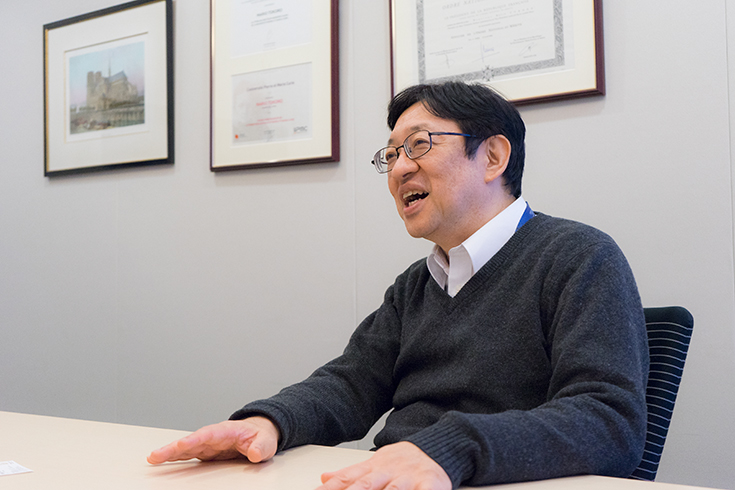
The RoboCup is the world cup of robots held based on the goal of “beating the reigning FIFA World Cup champion using autonomous humanoid football robots by the year 2050.” The next RoboCup will be held in Nagoya from July 25 to 31, 2017. (The games will take place from the 27th to the 30th.)
We interviewed Dr. Hiroaki Kitano, a doctor of engineering and president of Sony Computer Science Laboratories Inc., about the RoboCup. He initiated the RoboCup in the belief that it was necessary to establish a major goal and a global project in order to accelerate progress in research on artificial intelligence and robots.
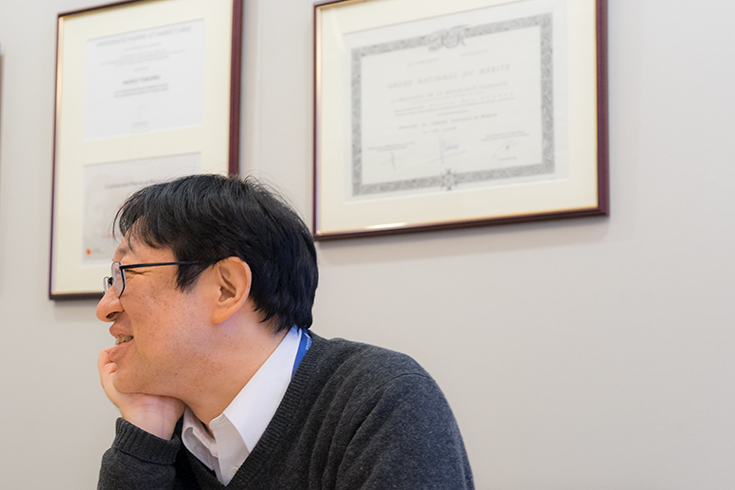
•The RoboCup Will Return to Nagoya in 2017 as a Large-scale International Competition
- The 21st RoboCup will be held in Nagoya this year. How has it changed compared to the first competition?
As this year’s competition will do, the first RoboCup took place in Nagoya in 1997. In those days, the scale was small, with Shiratori Hall (1,250 m2) of the Nagoya Congress Center as the venue. In addition, only about one-third of the hall was actually used. Everything was conducted in a trial-and-error manner.
Meanwhile, RoboCup 2016 took over almost the entire space of the venue for Leipziger Messe, one of the world’s largest international trade fairs. This makes me truly realize that the competition has grown into a massive, international event. In 2017, the RoboCup will be back in Nagoya once again. Even though Portmesse Nagoya, a large-scale venue, had been selected as the venue for this year’s competition, the secretariat insisted that an even larger facility should be used with consideration given to the number of expected visitors.
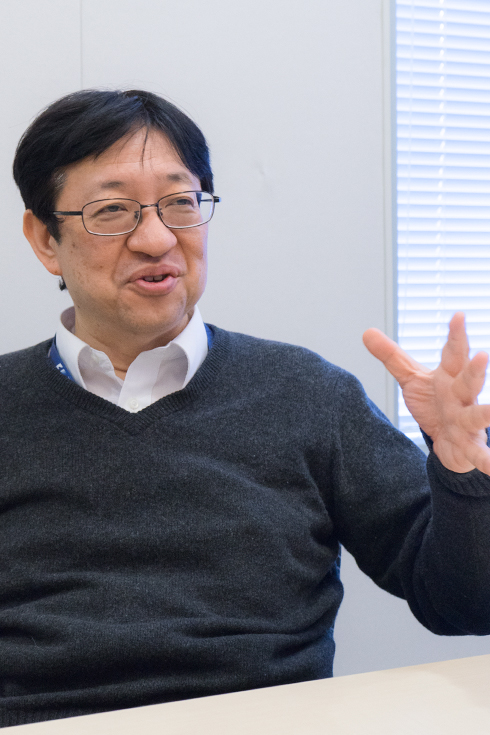
- What has made the RoboCup develop into such a large-scale event?
I feel that one of the biggest reasons is that the RoboCup has attractive cycles of challenges in which participants can compete.
The first cycle is the RoboCupJunior, designed to foster children by setting three types of competition themes (soccer, rescue, and onstage) that will stimulate their curiosity and inquiring mind, as well as encourage them to take on scientific challenges. In Japan, certified as one of the International Science and Technology Contests, the RoboCupJunior is well-known as a competition which is open to anyone who would like to participate.
Children who competed in the RoboCupJunior and learned about the technologies and teamwork necessary to develop robots and artificial intelligence will grow up to become researchers or developers in cutting-edge-fields, and then compete in the RoboCup once again and work hard together in friendly rivalry with one another. The RoboCup has realized such a good cycle.
- So, the RoboCup contributes to fostering developers in cutting-edge fields.
Such children’s careers are not limited to only engineers. Some have become scientists after participating in the RoboCup, and are now demonstrating their excellent capabilities at international conferences and other opportunities. Now that the RoboCup has become an international event attracting worldwide attention with the involvement of hundreds of thousands of people, its influence is increasing year by year. In addition, the competition has realized good cycles not only for children’s growth, but also in terms of companies and society.
- Can you give us any specific examples?
Using robot automation technology, one of the participants in the small-size league of the RoboCup established a company for realizing efficient warehouse logistics. The company was Kiva Systems. Acquired by U.S. online giant Amazon.com. Inc. in 2012 for 775 million dollars, the company became Amazon Robotics. Amazon will hold a robot competition Amazon Robotics Challenge in the same venue at the same time as the RoboCup. Our feeling toward the event is something like “Welcome back home!”
Some robot-and-AI-related technologies developed through the RoboCup have culminated in the company Amazon Robotics, and the company will provide an opportunity for participants to take on challenges regarding new technologies at the venue of the RoboCup. I feel that this is one of the good cycles of the competition.
- There might be cases where technologies developed through the RoboCup are being utilized in industrial fields.
We used to have a category called the quadruped-robot league, in which SONY’s AIBO was used as the standard robot. At around the time when the company stopped developing and selling the product, one of the participants in the RoboCup as a member of a French team established a robot company in cooperation with an entrepreneur. The company is Aldebaran Robotics. In and after RoboCup 2008, AIBO was replaced with the humanoid-robot Nao as the standard robot.
In 2014, it was announced that SoftBank had practically acquired Aldebaran. This year, Pepper will be adopted as the standard robot in the category of the RoboCup @Home. I feel that this is, in a way, an example of “Welcome back home!” and good cycles.
If many more people participate in the RoboCup and take on new challenges, it will follow that the cycles of the competition will become even bigger and more extensive. Consequently, the relationships with educational and industrial fields will be reinforced. Actually, during the past more than 20 years that I have been engaged in the RoboCup, the cycles and influence of the competition have become worldwide, making me aware of its considerable growth.
- When starting the RoboCup, did you intend to realize or extend the cycles in terms of human resources and technologies?
Yes. The RoboCup is an event for accelerating progress in research on artificial intelligence and robots. To realize this, I believe that competitions are indispensable and effective. Through the RoboCup, new technologies will be developed, researchers will be fostered, and companies will be established that will serve as leaders in the fields of robots and related technologies to contribute to society... When I launched the RoboCup, I intended the event to be designed to ensure that this process would occur. I would like to further accelerate it in the future.
- Soccer has been selected as the concept for the RoboCup. Is this intended to make the competition easy to understand for the general public?
Soccer is played everywhere in the world and has a high profile, so the selection of the sport as the concept certainly has the advantage of being easy to understand. But I selected the sport as a result of our analyses of necessary element technologies.
In what fields in society will robots and AI be needed in 20 years or 30 years? To answer the question, I considered what would be appropriate as a theme that would integrate all the necessary technologies for and functions of automatic operation, autonomous conversation, disaster relief, etc., and also that would be easy to understand for the general public. As a result, I came up with the theme that robots would beat a human champion team in soccer.
- Is the progress in robotics as you originally expected?
It is in some aspects, but not in others.
When the RoboCup was held for the first time, robots hardly moved. Since I announced our goal of enabling robots to beat a human soccer team, the competition attracted much media coverage, including large TV networks, from both home and abroad. However, far from playing soccer, the robots did not even move properly. Some TV crews asked me when the game would start, but the reality was that the game had already started five minutes before (laughter). As indicated by this funny story, the robots did not move at all.
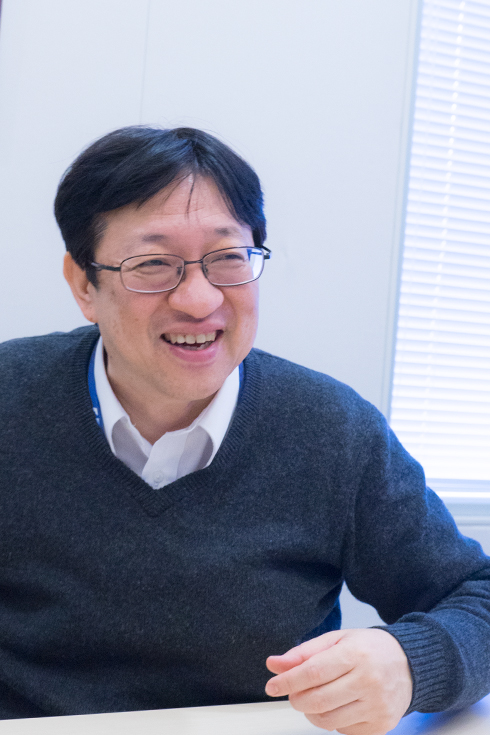
The proverb says “Perseverance will accomplish all things.” In the second year, the robots moved slightly better, followed by the third year, when they moved more properly, and the process of such improvement continued. In those days, there were frequent malfunctions of cameras and censors due to light from lighting equipment. In RoboCup 2016 Leipzig, however, the robots made progress to the extent that they could move as intended even under outdoor sunlight.
- In what aspect, do you think that progress has not been as you expected?
I feel that the speed of the progress in humanoid robots is slower than I expected.
As a matter of course, in order to play against a human soccer team, robots need to have a certain level of capabilities. For example, biped robots have now become able to walk, but cannot yet run about freely or jump. Without these capabilities, unfortunately, it is impossible to ensure that humans and robots can play a game of soccer.
In addition, robots need to be safe opponents for human players. Since many of the materials used for robot bodies are rather hard, such as steel, aluminum, resin, and plastic, it is necessary for robot bodies to be covered with much softer materials. I feel that massive progress is needed in robot hardware, including the mechanisms and exteriors.
The recent 20 years have witnessed gradual progress in such hardware, but without some innovative and drastic changes, such as new ideas or novel inventions, it will be difficult to achieve our goal. Although there is no telling when and how such innovation will occur, I look forward to it.
- Is there still a very long distance with no finish line in sight before a heated soccer game is played between human players and robots?
For example, in terms of technologies, Boston Dynamics has already developed Atlas, a humanoid robot featuring excellent motor abilities. Atlas and other robots of the same level are still in a research phase, so they cannot be purchased or operated by anybody. Nevertheless, the technologies for realizing such robots are already available, and I feel that if these robots begin to be available to anyone at much lower prices, it will not be so long before the dream of a soccer game between humans and robots is finally realized. To enable robots to play soccer as human players do, however, we need to make much progress in robots’ motor abilities and intelligence.
Highlights of the RoboCup
- Against the background of rapidly growing social expectations and attention to robots, it is expected that many people will watch the RoboCup for the first time. Can you talk about the highlights of the RoboCup for such beginners?
In the soccer league, I recommend the speedy “small-size league” and the dynamic “middle-size league.” In particular, partly because the middle-size league features moderately large robots and spectator stands, making the games easy to watch, the league has very heated, exciting semifinals and final every year. I hope that you will enjoy such heat and excitement of the games.
- Can you share with us any impressive episodes showing how spectators were excited?
For example, Italy formed a national team when competing in one RoboCup held in Europe.
Italy combined seven teams from the country, and even sought advice and cooperation from the Italian Football Federation. Italy was truly serious about winning the competition. In addition, in order to develop robots, the national team used the national training center system of the Italian Football Federation. The team was never allowed to suffer a crushing defeat. The game held between Germany and Italy in the competition attracted many visitors, who had chartered buses to the venue. Asking local people why the game drew such attention, I was told “It’s a soccer game, isn’t it? Even though it’s played by robots, we must never be beaten by them in soccer!” Soccer has truly enthusiastic fans.
It is fun, of course, to pay attention to the robots themselves, but it might be also interesting if you check the human competitors. You will see them working hard on the spot to improve or repair their robots, ragging their brains in a struggle to move their robots as intended, and trying again and again despite many failures. I feel that watching the RoboCup from this aspect is one of the most attractive features of the competition.
- Can family visitors also enjoy watching the competition?
Yes. The RoboCupJunior is also fun. It was first launched as an educational project, and its educational effect was measured. We expected that the junior competition would encourage participating children to develop an interest in robots, and that this would result in an increase in their school marks in science, which is related to robots. The consequence was, however, that their school marks improved generally not only in science but also in other subjects, which was a real surprise to us.
To take on challenges in the competition, participants need to be good at planning what, till when, and to what extent they need to develop, and also need to prioritize what to do. In addition, since it is impossible to develop robots alone, they need a cooperative attitude with which they can work together with their teammates while ensuring close communication. Our statistics show that the acquisition of these qualities has positively affected their daily lives, leading to an improvement in their general learning capabilities, not only in science but also in other subjects as well. We are pleased with the results.
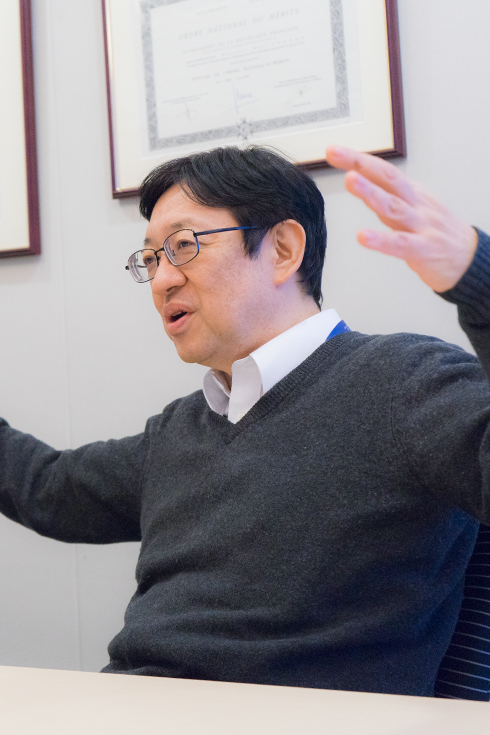
- Which event of the RoboCupJunior do you personally recommend?
If you are watching the RoboCupJunior for the first time, I recommend “On-Stage” (Dance Challenge). This is a dance contest featuring a fusion of robot technologies, costumes, and choreography, and also showing dance performance to music based on the themes that participants have set on their own. Participants need to conceive a dance storyline, create choreography, select music, ensure that robots dance as intended, and sometimes dance together with the robots. The event, thus, involves a wide variety of roles. Moreover, many girls participate, and some of them serve as team leaders. The event is like a blend of music, performance art, and technology.
- The RoboCup @Home is also interesting, isn’t it? In this league, the technologies developed through RoboCup Soccer are evaluated in competition form according to how they can be applied to people’s daily lives and how robots using the technologies can cooperate with humans in the kitchen and living room.
We launched RoboCup @Home after beginning to consider the league in around 2008 in response to a proposal from a participant, based on the assumption that there would be household use of robots in the future. From this year, Toyota’s HSR and SoftBank Robotics’ Pepper will be adopted as the standard platform of RoboCup @Home. I feel that this will become one of the highlights.
Regarding RoboCup Rescue, we had the idea for the league from the beginning of the RoboCup. However, partly because rescue-related laws and systems vary depending on the country, it was difficult to make unified rules for an international competition.
Accordingly, we selected soccer as the theme for the first RoboCup, but since we wanted to realize the rescue league as soon as possible, we established a working group in the following year and began to prepare for initiating the RoboCup Rescue league.
- Are there any cases where technologies developed through RoboCup Rescue were highly evaluated and then put to practical use for responding to disasters?
Yes. A few months after RoboCup Rescue was held in 2001, the coordinated simultaneous terror attacks occurred in New York. At that time, technologies used for robots participating in the RoboCup Rescue were introduced to handle the disaster, and the robots continued to engage in operation on the spot for three weeks.
We have also another case. Highly recognized especially in its running performance, the robot of the team from Chiba Institute of Technology, who was champion in 2009, was modified to work properly even if exposed to radioactivity, and then introduced to the nuclear disaster site in Fukushima Prefecture. However, disaster surroundings are almost always more severe than expected, and each disaster has its own features, making it impossible for technologies developed for the RoboCup to demonstrate their fullest capabilities on the spot as they are. It is important to make a wide variety of response and adaptation on the spot.
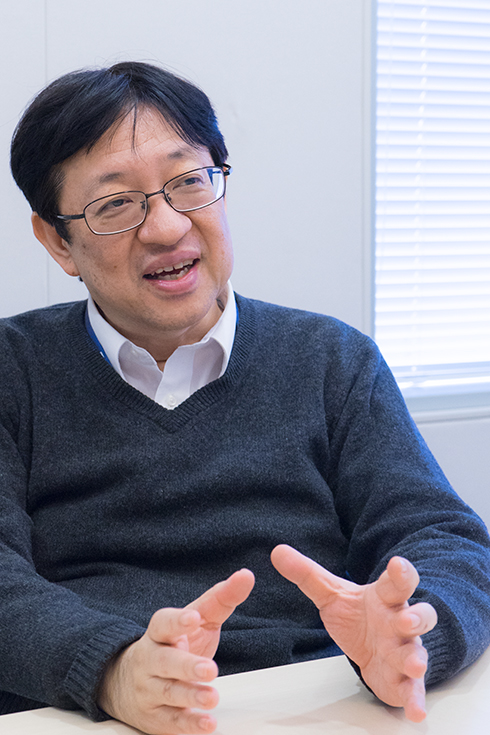
[Profile of Dr. Hiroaki Kitano]
President & Chief Executive Officer of Sony Computer Science Laboratories Inc. President of The Systems Biology Institute (non-profit private research institution). Professor of Okinawa Institute of Science and Technology Graduate University. Founding President of the RoboCup Federation. Corporate Executive of Sony Corporation.
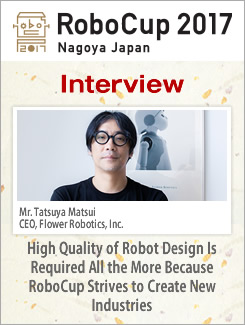




RoboCup2017 Nagoya Secretariat
(Inter Group Corp.)
[E-mail] info@robocup2017.org
[Tel] +81-52-581-3241
Orchid Building 8F, 2-38-2, Meieki, Nakamura-ku, Nagoya, 450-0002 JAPAN